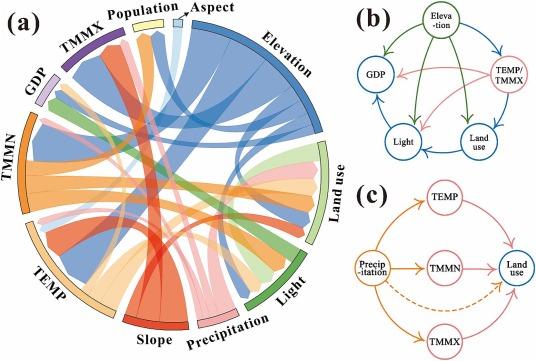In the quest to understand the rapidly changing natural world, ecologists are turning to advanced methods of causal inference to unravel the complex drivers behind biodiversity shifts. A new article in BioScience titled “Advancing causal inference in ecology: Pathways for biodiversity change detection and attribution” shines a spotlight on innovative approaches that promise greater clarity in identifying the root causes of ecological change. As ecosystems across the globe face unprecedented pressures from climate change, habitat loss, and human activity, these cutting-edge techniques are becoming essential tools for scientists aiming to detect, attribute, and ultimately mitigate biodiversity loss.
Advancing Methods for Unraveling Cause and Effect in Ecological Systems
Understanding causal relationships within ecological systems is imperative for accurately tracking biodiversity changes and identifying the drivers behind them. Recent advances leverage sophisticated statistical frameworks and machine learning techniques, enabling ecologists to move beyond mere correlations and more confidently infer cause-effect dynamics. Among these, dynamic causal models and Bayesian networks are emerging as powerful tools, integrating heterogeneous datasets from remote sensing, species occurrence, and climate records. These approaches facilitate the disentangling of complex interactions, such as feedback loops between species behavior and environmental shifts, which traditional methods often overlook.
Practical applications of these methodologies are already reshaping conservation strategies by providing clearer attribution of biodiversity trends to specific anthropogenic or natural factors. Key features accelerating this progress include:
- Enhanced dimensionality reduction techniques to simplify multivariate ecological data.
- Iterative model validation using experimental and observational data for increased robustness.
- Integration of temporal and spatial scales to capture ecosystem dynamics at fine resolutions.
| Method | Primary Strength | Application Example |
|---|---|---|
| Bayesian Networks | Handling uncertainty & missing data | Predicting species response to climate change |
| Granger Causality | Time-series causal inference | Detecting lagged effects of pollution on fish populations |
| Structural Equation Modeling | Testing complex indirect effects | Linking habitat fragmentation to community composition shifts |
Enhancing Biodiversity Monitoring Through Improved Change Detection Techniques
Recent advancements in ecological research emphasize the critical role of cutting-edge change detection methods to map biodiversity shifts with unmatched precision. Leveraging innovative statistical models combined with remote sensing technologies has empowered scientists to differentiate between natural variability and human-induced transformations across diverse ecosystems. This refined clarity not only accelerates identification of vulnerable species but also enhances the accuracy of temporal trend analyses essential for shaping conservation priorities.
Key techniques driving progress include:
- Integration of causal inference frameworks to pinpoint direct drivers of biodiversity change
- Utilization of high-resolution satellite imagery for near real-time habitat monitoring
- Deployment of machine learning algorithms to interpret complex ecological datasets
- Advancement in sensor networks enabling continuous environmental parameter tracking
| Technique | Impact on Monitoring | Example Application |
|---|---|---|
| Causal Inference Models | Isolates human vs natural effects | Assessing deforestation drivers in Amazon |
| Remote Sensing | Rapid habitat change detection | Tracking coral bleaching events |
| Machine Learning | Decodes large biodiversity datasets | Species population trend predictions |
Strategic Recommendations for Robust Attribution in Ecological Research
To enhance the reliability of causal attribution in ecological studies, researchers must prioritize integrating diverse data sources and analytical techniques. Combining long-term observational data with experimental manipulations and remote sensing technologies can help untangle complex biodiversity dynamics. Emphasis on multi-scale analysis is crucial-considering both local and global factors ensures a comprehensive understanding of ecological changes. Additionally, leveraging advanced statistical models such as Bayesian networks and structural equation modeling provides a framework to assess causality rather than mere correlation, driving more confident inferences.
Equally important is the establishment of collaborative platforms that promote transparency and data sharing across disciplines. Such initiatives foster reproducibility and minimize biases linked to single-study interpretations. Below is a concise outline of strategic actions recommended for strengthening attribution efforts:
- Cross-disciplinary collaboration: Integrate ecology with climatology, genomics, and socioeconomics.
- Dynamic baseline development: Update reference conditions to reflect ongoing environmental changes.
- Innovative causal frameworks: Utilize machine learning and causal inference tools.
- Standardized reporting: Facilitate meta-analyses through consistent data documentation.
| Challenge | Recommendation |
|---|---|
| Data Gaps | Expand monitoring networks |
| Complex Interactions | Adopt multivariate models |
| Temporal Variability | Use time-series frameworks |
| Bias in Attribution | Promote cross-validation methods |
Key Takeaways
As ecological challenges mount amid global environmental change, advancing causal inference stands as a pivotal step toward accurately detecting and attributing shifts in biodiversity. This groundbreaking exploration from besjournals illuminates innovative pathways that blend rigorous data analysis with ecological insight, paving the way for more precise, actionable understanding of biodiversity dynamics. As researchers continue to refine these methods, the potential to inform conservation strategies and policy decisions grows ever stronger-offering hope for safeguarding the planet’s rich and vulnerable ecosystems in an uncertain future.
